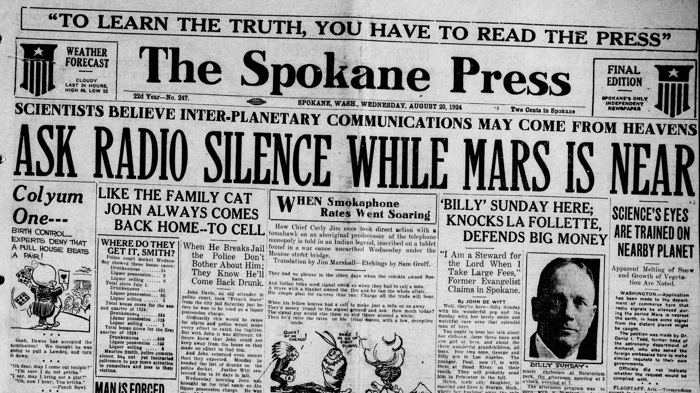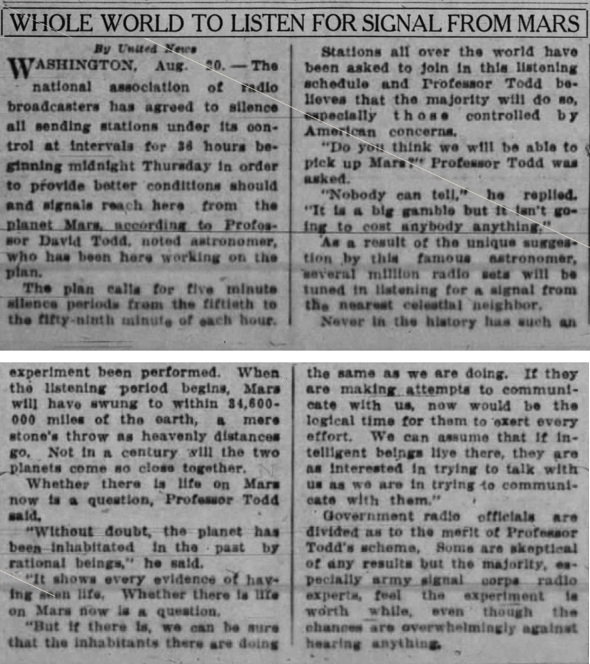Aliens
The Thing museum
Yesterday I posted about a recent visit I made to the Last Supper Museum in Douglas, Arizona. On the same trip (in fact, on the same day) I also visited "The Thing" museum, which is off the I-10, about 70 miles north of Douglas (and 50 miles east of Tucson).The two are both weird museums, but share no similarities beyond that.
The Last Supper Museum is the oddball passion project of an individual. The Thing, on the other hand, is highly commercialized and corporate-owned.
The commercialization begins with the numerous billboards advertising the museum up and down the I-10. Then, when you arrive, you find that it's part of a gas station/travel stop complex. To get to the museum itself you have to walk through a gigantic gift store.


The Thing wasn't always like that. It started out sixty years ago as a roadside attraction run by Thomas Binkley Prince. He displayed a few oddities, such as a car that he claimed had belonged to Hitler, as well as a mummified humanoid body that he called "The Thing" (the namesake of the museum).
Prince died in 1969, and the museum was eventually acquired by Bowlin Travel Centers, Inc.
In the 2010s, Bowlin expanded and updated the museum. They evidently decided to capitalize on the "Ancient Aliens" craze, because the majority of the museum is now devoted to telling the story of an extraterrestrial race, the RAH'thians, and their ongoing interaction with life on Earth, beginning with the dinosaurs and continuing through to the present day.
You walk through a winding exhibit hall, past life-size models of extraterrestrials and dinosaurs (and extraterrestrials fighting dinosaurs with laser guns). The models are pretty cool and very professionally done. The problem is that it all comes across as a bit jokey and tongue-in-cheek, which negates the weird factor.



Questions are frequently posed on the walls.


Finally you arrive at a room in which the original Thing is displayed. The connection between the Thing and the preceding dinosaurs and extraterrestrials wasn't clear to me.
It cost $5 to see the entire museum, which isn't a lot. If you happen to be driving down the I-10, I'd say go see it. But I wouldn't make a special trip to visit it.
More info: RoadsideAmerica.com; Wikipedia.

Posted By: Alex - Tue Dec 17, 2024 -
Comments (6)
Category: Aliens, Museums, Dinosaurs and Other Extinct Creatures, Arizona
Unofficial Insignia of the 509th Operations Group
Info from wikipedia:
Posted By: Alex - Mon Nov 11, 2024 -
Comments (2)
Category: Aliens, Military
Alien Abduction Perfume
"Abduction is a unisex eau de parfum inspired by scents described by close encounter experiencers – the product of a collaboration between Joe Merrell and perfumer Christopher Gordon."It can be purchased for $85 from THE EYES ARE ALWAYS THERE.

A description of it from a review on parfumo.com:
Posted By: Alex - Sat Jun 01, 2024 -
Comments (2)
Category: Aliens, Perfume and Cologne and Other Scents
Cosmohedron
Posted By: Paul - Sun Jan 28, 2024 -
Comments (1)
Category: Aliens, Surrealism, Cartoons
The Midnight Parasites
Posted By: Paul - Wed Jan 24, 2024 -
Comments (0)
Category: Aliens, Cryptozoology, Death, Surrealism, Cartoons, 1970s
My Favorite Martians
The Wikipedia entry.
Posted By: Paul - Sat Dec 16, 2023 -
Comments (0)
Category: Aliens, Ineptness, Crudity, Talentlessness, Kitsch, and Bad Art, Television, Cartoons, 1970s
National Radio Silence Day
From Wikipedia:No Martian messages were received.
More info: ufopast.com


Posted By: Alex - Thu Dec 14, 2023 -
Comments (1)
Category: Aliens, Radio, 1920s
The Possibility of Life inside Stars
The conventional wisdom is that if sentient life exists elsewhere in the universe, it probably lives on another planet. But in 2020, the physicists Luis Anchordoqui and Eugene Chudnovsky argued that we should consider the possibility that life (including technologically advanced civilizations) might exist inside stars.Their argument relies upon a very expansive view of the definition of life. They admit that biological life couldn't exist inside a star, but they argue that high-energy physics supplies various "nuclear objects" such as "strings, monopoles, and semipoles" that might be able to encode information and form a self-replicating system (i.e. life).
Their hypothesis is, of course, highly speculative, but they suggest it might provide an explanation for a previously unexplained phenomenon observed in some stars:
“There are no theories that explain it,” Chudnovsky said. “So maybe it’s a very complicated process related to the function of a civilization inside the star.”
If a star harbored a nuclear civilization within it, he explained, the energy used to sustain that civilization would cause the star to cool and dim faster—in effect speeding up the aging process. And, at some point, the star would no longer produce enough energy to sustain this form of life.
More info: Lehman College News Center; "Can Self-Replicating Species Flourish in the Interior of a Star"
Posted By: Alex - Sun Sep 10, 2023 -
Comments (1)
Category: Aliens, Spaceflight, Astronautics, and Astronomy
Space is the Place
The definitive statement from a master weirdo, Sun Ra. A couple of clips below.The entire movie can be viewed on YouTube (but not embedded here).
Posted By: Paul - Tue Aug 08, 2023 -
Comments (3)
Category: Aliens, Eccentrics, Bohemians, Beatniks, Hippies and Slackers, Music, Space Travel, 1970s
Pete Drake’s “Forever”
What is the weird device used by the guitarist? Let his Wikipedia page explain:You play the notes on the guitar and it goes through the amplifier. I have a driver system so that you disconnect the speakers and the sound goes through the driver into a plastic tube. You put the tube in the side of your mouth then form the words with your mouth as you play them. You don't actually say a word: The guitar is your vocal cords, and your mouth is the amplifier. It's amplified by a microphone.
Posted By: Paul - Fri May 26, 2023 -
Comments (1)
Category: Aliens, Music, Technology, Adaptations, Reworkings, Recastings and New Versions, 1960s

| Who We Are |
|---|
| Alex Boese Alex is the creator and curator of the Museum of Hoaxes. He's also the author of various weird, non-fiction, science-themed books such as Elephants on Acid and Psychedelic Apes. Paul Di Filippo Paul has been paid to put weird ideas into fictional form for over thirty years, in his career as a noted science fiction writer. He has recently begun blogging on many curious topics with three fellow writers at The Inferior 4+1. Contact Us |




